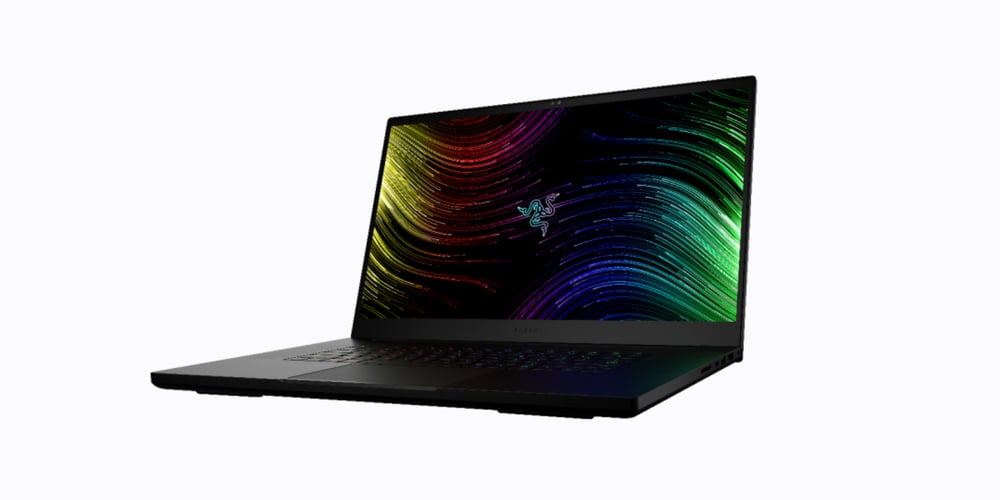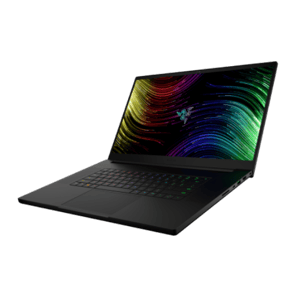When it comes to gaming laptops, Razer’s Blade 17 line has always been occupying the top spots on many ‘best of’ lists. Today, we’re taking a look at one of their recent flagship devices, complete with an RTX 3080 Ti, 32GB DDR5 RAM, and a 14-core Intel i7-12800H processor and a 360Hz screen.
In theory, this should be the ideal machine for competitive gamers who want to remain mobile (we all know that hauling around a desktop PC along with a monitor is a logistical nightmare) but its specs of course also ensure that it can be used for content creation, media consumption, and of course gaming with the settings turned all the way up.
Looking for a top-end gaming laptop with all of the latest tech that will absolutely slay modern games? Read our full Razer Blade 17 review to find out if this laptop is for you.
At A Glance
Razer Blade 17 (2022)
If you’re looking for a gaming laptop that has all the performance you could ever want as a competitive gamer then you’ve got to take a look at the Razer Blade 17. It packs a mean punch and its top tier specs and ditto performance mean that you will be able to play your favorite games without any hiccups or distractions whatsoever.
Pros
- Good keyboard for a laptop
- Very thin
- Extremely impressive gaming performance
- Good speakers
- 360Hz panel in a laptop
- 17.3″ screen size looks to be the perfect compromise between portability and visual clarity
Cons
- Chassis if a fingerprint magnet
- Extremely expensive
- Not very portable due to the weight and large charger
- Battery life isn’t very impressive
Available Configurations
The Blade 17 is available in multiple different configurations, with the cheapest option starting at around 2600 euros, featuring an RTX 3060 GPU and an i7-11800H processor along with 6GB of RAM and a 165Hz screen. There are multiple options to choose from when it comes to the screen and its refresh rates. There is a 4K 144Hz model, a QDH 240Hz model, and a FHD 360Hz model.
It’s important to get a display that matches your needs (content creation, casual gaming, competitive gaming, …) and we’ve reviewed the top tier 360Hz model for testing since that’s obviously the most competitive gaming-oriented model. This configuration retails for around 4300 euros at the time of writing, though the 360Hz screen isn’t limited to the top end of Blades: you can also get a Blade 17 with an RTX 3060 and an i7-11800H that has a 360Hz screen for around 2700 euros, for example.
Design and Build Quality
It’s immediately noticeable just how clean and sleek the Razer Blade 17 looks. There’s of course the Razer logo that’s proudly displayed with some subtle lighting behind it, but aside from that there are no crazy curves or ‘gamery’ design elements, and I like that. If you’re spending around 4000 dollars on a gaming laptop (for the top end; there are also lower tier models available like I said) you want something that fits in everywhere and doesn’t stand out like a sore thumb in cleaner or more neutral environments if you ask me, and the Blade 17 does exactly that.
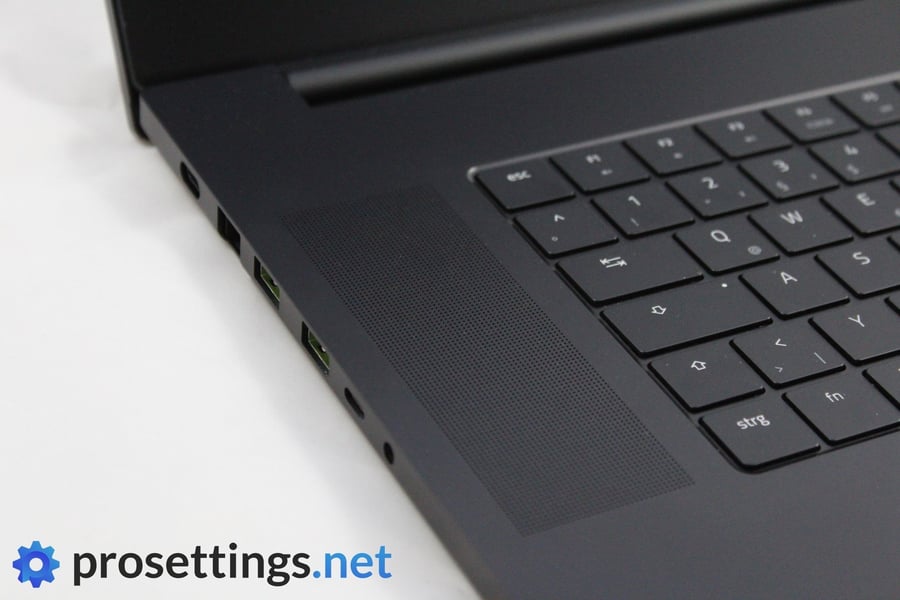
The Blade 17 has an aluminum chassis, and everything from the screen hinge action to the finishing of the edges feels and looks high end, and aside from the keyboard (which, of course, has RGB backlit keys) there are no RGB elements. I’m not saying that RGB elements can’t be done in a classy way, but it’s nice to see that Razer has gone for maximum sleekness with the Blade 17. It’s also thin for a gaming laptop, which only adds to its attractive looks.
Sadly, the laptop does attract fingerprints. It’s easily cleaned off but if you move it around a couple of times you’re likely to spot some prints here and there. That’s not a huge deal, but given the fact that Razer advertises their anti-fingerprint coating in their marketing materials I felt like it was something I had to mention. I will admit I don’t have any real experience with previous models so I can’t compare to what it was like with previous generations, but some work can still be done here if you ask me. In the photo of the underside of the laptop further down in the review you can what it looks like after a day or three of usage and moving it around quite regularly.
I also like the size of the Blade 17. I primarily tested this as a gaming laptop (which is why I’m testing the 360Hz FHD version; there’s also a 240Hz QHD version that costs the same) so for me personally, a laptop meant for competitive gaming shouldn’t be a whole lot smaller than this, otherwise it might become a bit too difficult to spot enemies that are further away. As a logical consequence of the specs and the size it’s of course not the most portable laptop. It’s without a doubt on the weightier side, and if you have to carry this around along with its battery (which is something you should pack if you’re looking to game away from home) you will start noticing the weight after a while.
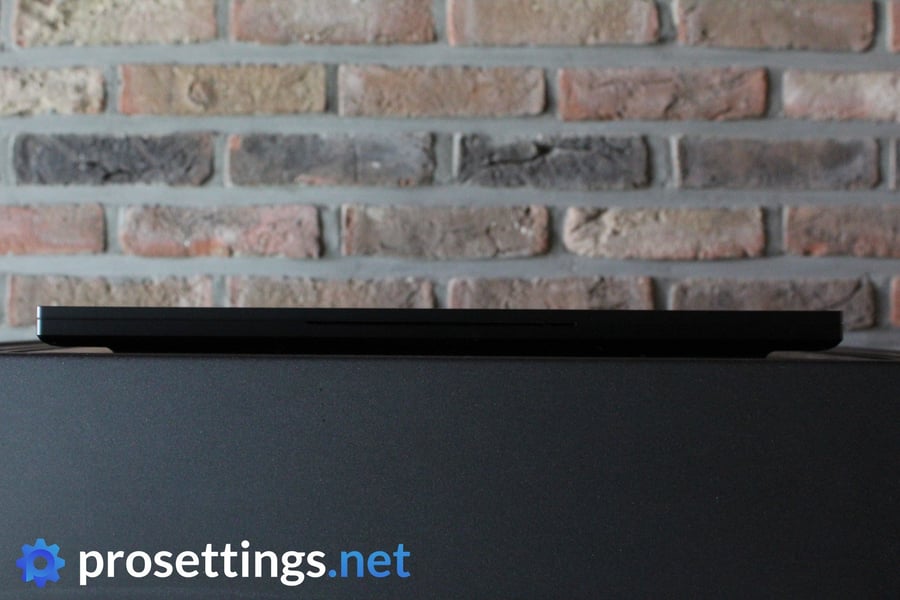
Is that a problem? I don’t think so. To me, the Blade 17 is a laptop aimed at people who are often gaming (or creating, or working, or …) in different locations and as such want a portable top tier PC that can easily come along with them, not at people who want a small laptop that they can carry with them for an entire day and whip out at a moment’s notice.
All in all, I think Razer is spot on with the design of the Blade 17. It looks and feels classy and premium and it’s, for me at least, the ideal size for gaming on the road.
Features
The model that I’ve been testing is the top tier model, complete with a 360Hz screen. Given the fact that there’s also a model with a 240Hz QHD panel this is without a doubt the Blade 17 version that’s aimed at competitive gamers. For competitive gamers, frames matter. It’s no secret that players at the top of their game are not looking for any compromises when it comes to performance (you just have to look at the amount of ‘overkill’ GPUs that are being used by professional players in games that aren’t very difficult to run) so naturally the Blade 17 has the latest tricks up its sleeve. With a 3080 Ti, i7-12800H processor, and 32GB DDR5 RAM you’re not going to be lacking when it comes to performance.
The Blade 17 isn’t just a gaming laptop, though. If you’re looking for a powerful device for content creation or work purposes you can definitely consider this one (though you’ll probably want the version with a 240Hz QDH panel, or the version with a 144Hz 4K display) and it’s ready for those use cases, too. There’s a 1080p built-in webcam (which produces an okay image; though it’s nothing extremely special) along with a mic array that produces a very decent sound for stuff like online meetings or video calls with friends and family, and the laptop has all the ports you could want, including an SD card reader, an ethernet port (seeing as competitive gamers likely won’t be gaming in WiFi this is definitely a useful addition), an HDMI port, and various USB ports.
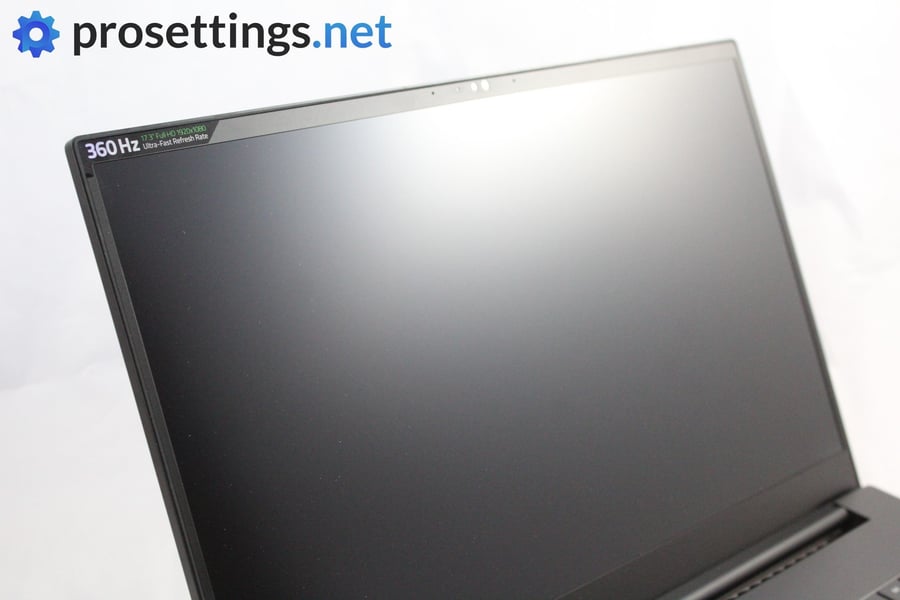
The speakers have also been upgraded and are something of a point of pride for Razer. Supported by THX Spatial Audio, the Blade 17 promises a ‘full-range audio experience worthy of the big screen’. Aside from the fact that laptop speakers will never live up to a decent pair of headphones or good external speakers it’s nice to see that attention also went to the auditory experience, though that is perhaps something that you could reasonably expect from a laptop at this price point.
Finally, the inclusion of an RTX GPU means that gamers will also be able to make use of NVIDIA’s latest tech such as DLSS.
Gaming and Everyday Usage
As expected, the Blade 17 has absolutely no issues running all of our analyzed games. That’s no surprise at all, given the fact that it’s packing the latest technology in the gaming space.
Games such as VALORANT and CS:GO run absolutely buttery smooth on the Blade 17, and the power of that 3080 Ti along with the rest of the internals make sure that you’re going to be making full use of the 360Hz refresh rate panel, while heavier games such as PUBG and Rainbow Six Siege run without any hiccups at all. If you’re looking for the ultimate laptop for competitive gaming I don’t think you should look any further at this point in time: the Blade 17 absolutely has you covered.
I of course also played some recent single player games with the settings absolutely maxed out. I played Control to check out the power of ray tracing, for example, and I did so without noticing any noteworthy frame drops. Games like Cyberpunk 2077 also run smoothly. In a nutshell: the Blade 17 has the most powerful hardware on the market right now under the hood, it’s definitely going to run the latest games without breaking a sweat.
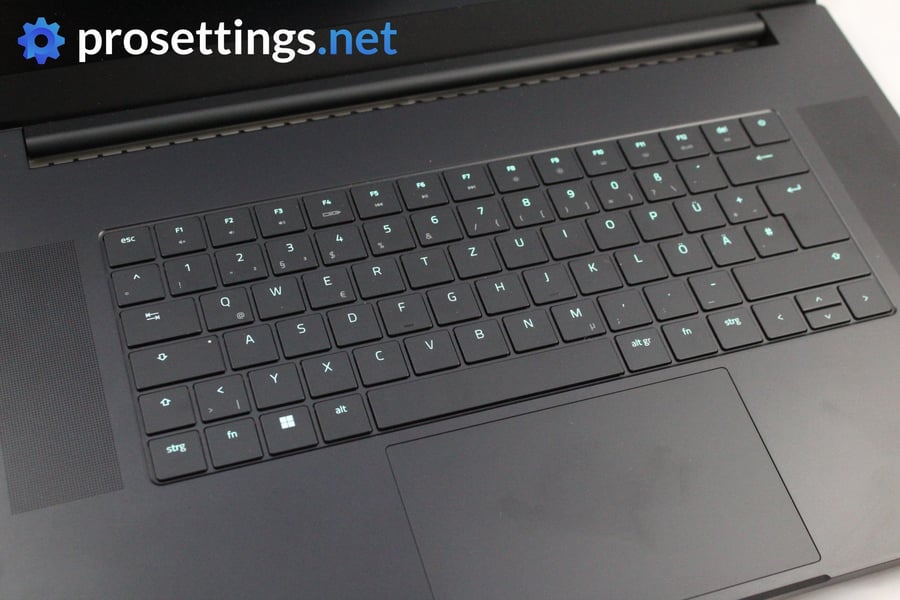
What’s nice to see (and hear) is that it does so without being too ostentatious about it. Even when pushing the laptop’s hardware to its limits it stays relatively quiet for a gaming laptop. Of course the fans will get loud when games go all out with the graphics so you will hear it running, but I never felt as if the noise levels went overboard. I measured around 53 Decibels when gaming at max, which is the equivalent of moderate rainfall or a household refrigerator. I can definitely live with that.
It also stays remarkably cool. The underside can get a bit toasty under stress so I wouldn’t go for any late night underwear gaming sessions with the laptop on your lap, but I never had any issues with the heat when using it on a desk. The heat exhausts also don’t put out a lot of warmth when gaming at full load, so I didn’t feel my mouse hand getting toasted or anything like that. The topside of the laptop also remained very much usable, and I never felt as if my hand or fingers were overheating when using the built-in keyboard.
Speaking of the keyboard: it’s very decent. A laptop keyboard will obviously not live up to a nice mechanical keyboard but I didn’t have any problems using this for gaming. The keys are large enough and feel pleasant to press, and I did not have any issues with accidental presses or anything like that. The trackpad, for me, is okay too, though I obviously mostly used gaming mice to test this laptop as I can’t imagine that anyone will be buying a top tier gaming laptop with a 360Hz screen so that they can play competitive games with a trackpad.
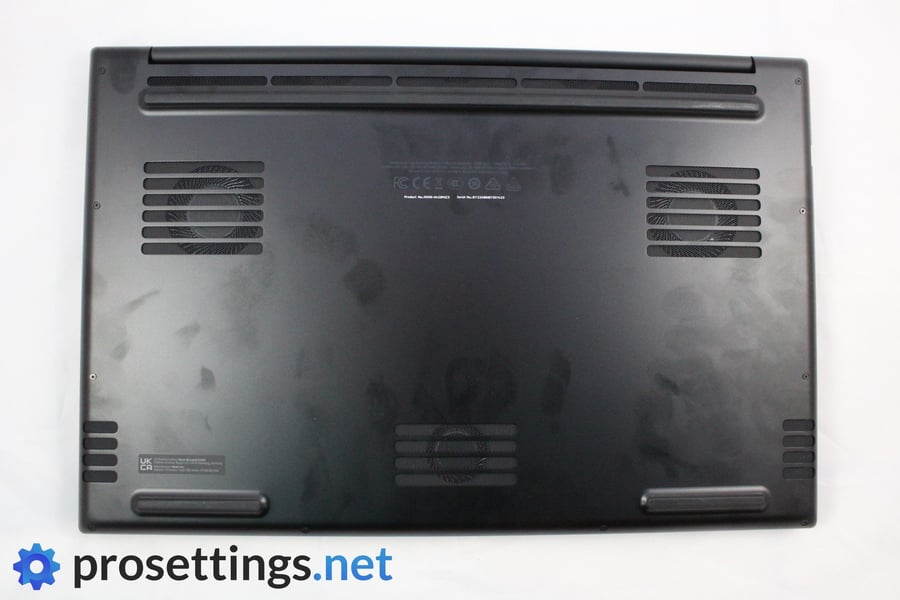
The screen itself looks fantastic, too. It’s only 1080p on the version that I reviewed but I found the colors to be vibrant and lively straight out of the box. It gets bright enough to use in abundantly lit rooms and of course that refresh rate will give you a buttery smooth gaming experience. If you want the crispiest image possible while still maintaining competitive framerates there’s also a 240Hz QHD version, and that’s the one I would recommend to people who are a bit more on the casual side when it comes to gaming, as this screen really is meant for serious gamers who desire performance above anything else.
The sound, then, isn’t anything special if you ask me. It certainly doesn’t rival a theater experience like Razer states. Don’t get me wrong: it’s great, for a laptop, but if you’re going to be playing competitive games where sound means a lot you will want to use a decent headset (or a pair of headphones) anyway. Even for more ‘concentrated media consumption’ experiences I would recommend headphones or external speakers, as the speakers on the Blade 17 lack that trademark ‘oomph’ sensation that you get from explosions or bassier events. For casual YouTubing or listening to music in the background these speakers are definitely more than enough though, and I can’t say that I found myself searching for my headphones all too often.
Of course all of this power comes at a price, both literally and figuratively. The battery on the Razer Blade isn’t all that impressive and drains rather quickly when you’re gaming. You can probably get an hour or so out of the device when throwing lots of intensive tasks (like gaming) at it but not much more, so if you’re going on a long road trip and you thought of gaming in the backseat for multiple hours you’re out of luck.
It’s also a good idea to bring the battery charger when you’re taking the laptop. You can charge the Blade via USB-C but if you do that while using the laptop you’ll only just be supplying enough juice to keep it alive for mundane tasks. Once you start gaming you will definitely want that included charger. I personally don’t see this as a problem because, again: I see this as a laptop that you take with you from point A to point B, and not as something that you’d use to sit on your lap for multiple hours each day, but it’s good to know beforehand of course.
Razer Blade 17 (2022) Review – Conclusion
If you’re looking for a gaming laptop that has all the performance you could ever want as a competitive gamer then you’ve got to take a look at the Razer Blade 17. It packs a mean punch and its top tier specs and ditto performance mean that you will be able to play your favorite games without any hiccups or distractions whatsoever.
It’s definitely an expensive piece of equipment though, and if you’re a bit more casual or you don’t want the latest and greatest when it comes to those under-the-hood specs you can always take a look at Blades that are a bit further down the ladder, but for those who want the best of the best this is probably the one to get. I wouldn’t hesitate to use this for serious competitive gaming, and if you’re someone who’s often on the road and you want to get your gaming fix in without compromising on anything then you’ve found your solution.


